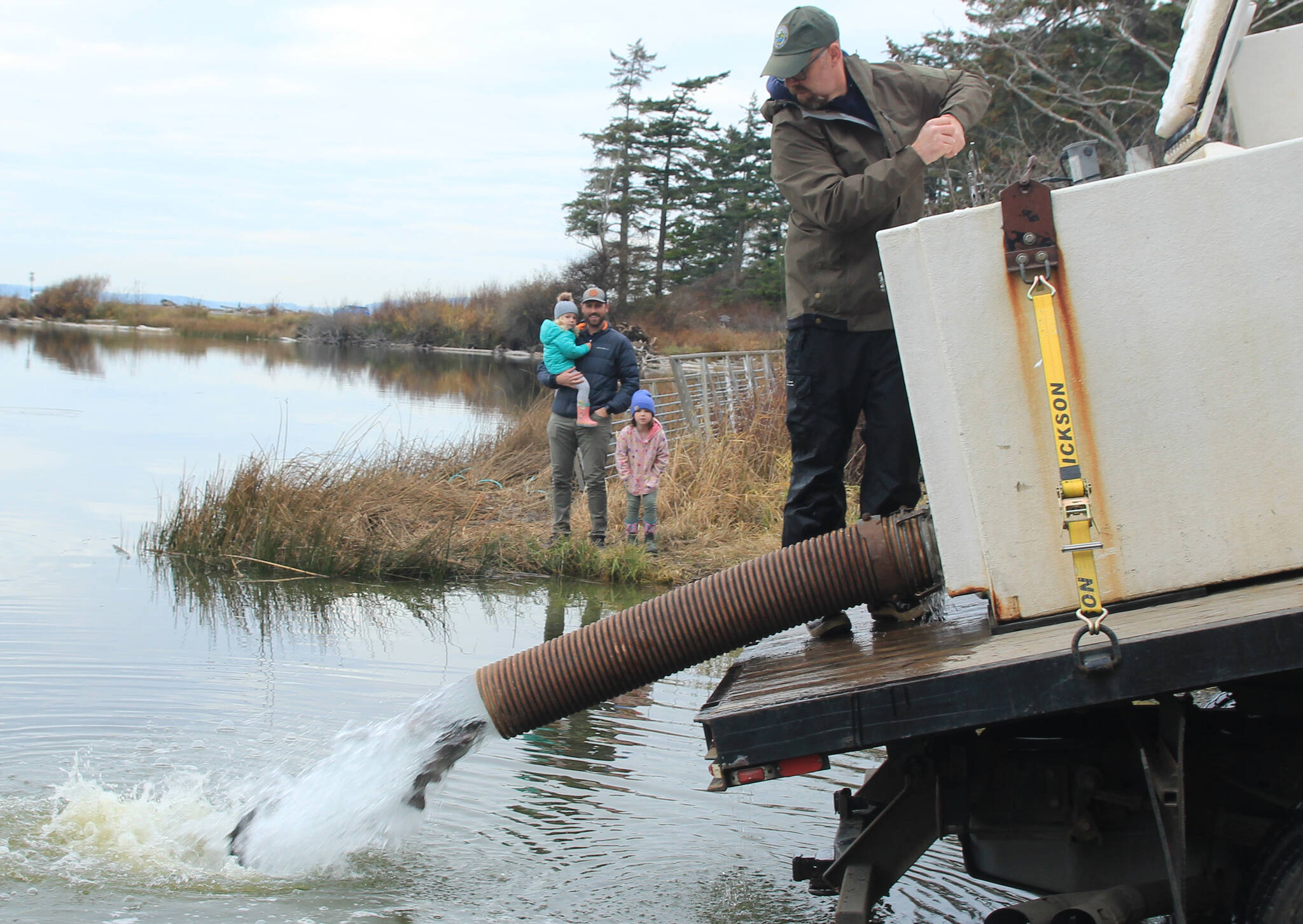Fifteen hundred trout made a trip just before Thanksgiving from their birthplace not far from the Canadian border to Deception Pass State Park, where they were spilled into Cranberry Lake as a handful of anglers eagerly watched the action.
A total of 4,000 rainbow trout from the Kendall Creek hatchery were released this month from tanks on the back of trucks into the sprawling, 130-acre lake under the state Department of Fish and Wildlife’s hatchery trout and kokanee stocking program. Justin Spinelli, a biologist with Fish and Wildlife, explained that the trout are considered “jumbo” and catchable because they are greater than 14 inches and over 1 pound each.
Those interested in reeling in a trout may want to hurry. Spinelli said the fish are easiest to catch in the weeks following their release.
“Early on bait works really well,” he said. “Later on they learn to forage and do things in more of a strategic way.”
Anglers waiting on their boats for the fish release admitted that catching fish on Cranberry Lake is normally challenging, although at least one boat had luck within 10 minutes of the rainbows being poured into the lake.
More than 16.2 million trout and kokanee — the non-anadromous form of the sockeye salmon — will be released in 500 bodies of water across the state by the end of the year. The program is meant to provide recreational fishing opportunities to anglers.
Cranberry Lake is one of five lakes on Whidbey Island that is stocked with fish by the state. This year Cranberry Lake was stocked with 10,000 catchable-sized rainbow trout in April and then the 4,000 jumbos in November. In October, 7,000 brown trout fingerlings were also poured into the lake.
How well the fishies grow depends on the lake and the amount of food available, according to Spinelli. Nearby Pass Lake has phenomenal habitat for growing fish, he said, but Cranberry Lake is also a pretty good home for fish. He said he expects the released fish to retain their plumpness into the winter and to possibly grow to 18 inches by June, if they survive anglers and eagles.
Spinelli said brown trout live longer than rainbows, so they have the opportunity to get bigger. The fingerlings will be about 12 inches by June and 14-15 inches by fall. Brown trout as big as 19-20 inches have been caught in the lake.
In addition to trout, resident largemouth bass and yellow perch can be reeled in.
Cranberry Lake and Lone Lake on South Whidbey are open to fishing year round, although Lone Lake has selective gear rules, a minimum 18-inch rule and a daily limit of one in effect. Lone Lake is stocked with 3,000 catchable-sized rainbow trout in March.
Goss and Deer lakes, both of South Whidbey, are open to fishing on the fourth Saturday in April to Oct. 31. The two lakes are stocked with cutthroat and rainbow trout. The South Whidbey Rod and Gun Club’s lake is also stocked during the annual fishing derby.
All the effort of stocking fish, Spinelli said, is ultimately for one purpose — making it fun to fish on Washington lakes and rivers. And judging from the excited anglers and families visiting Cranberry Lake, it’s a successful endeavor.



